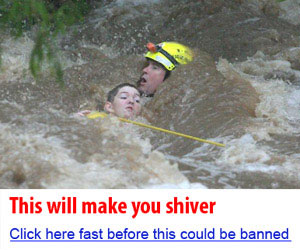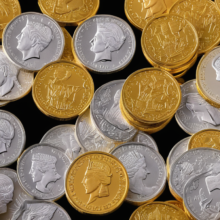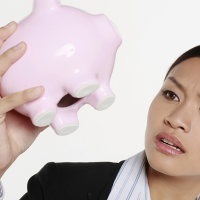If things really fall apart, can anyone truly be ready? It’s terrifying to even think about.
Ready to start prepping? Check out these great deals!

Those words have probably crossed your mind, haven’t they? Maybe in the quiet hours of the night or during a day where the weight of uncertainty just pressed too hard. It’s a gut-wrenching thought—what happens when the world as you know it starts to crumble? Not just figuratively, but literally. Power grids failing, supply chains breaking, systems you’ve trusted your whole life suddenly becoming unreliable. The idea makes your chest tighten, doesn’t it?
But here’s the thing: you’re not alone in feeling that way. The truth is, most people aren’t ready for life’s big disruptions—not because they don’t care, but because imagining the worst feels paralyzing. And yet, isn’t that exactly why we should think about it? Because when the ground shakes, it’s the ones who’ve prepared, even just a little, who stand the best chance of steadying themselves.
Why Do We Avoid Thinking About Disaster?
Honestly, it’s easier not to. Who wants to sit down with a cup of coffee and casually ponder how to handle societal collapse? The idea feels heavy, like inviting dread to sit beside you on the couch. But there’s also this quiet, unspoken belief many of us cling to: “That won’t happen to me.”
It’s human nature to lean on optimism, to assume tomorrow will look a lot like today. But optimism without action? That’s like locking your door at night but leaving the windows wide open. You feel secure, but you’re not. And when disaster does strike—whether it’s a freak snowstorm, a job loss, or something bigger—you’re left scrambling.
The Fine Line Between Prepared and Paranoid
Let’s clear something up: being ready doesn’t mean becoming a doomsday prepper with a bunker full of canned beans (unless you want to, no judgment). It’s not about living in fear or obsessing over worst-case scenarios. It’s about acknowledging that life is unpredictable and taking simple, practical steps to create a buffer between you and chaos.
Think about it like this: you wouldn’t drive without car insurance, right? Not because you expect to crash every time you hit the road, but because having that coverage makes you feel secure. Preparing for the unexpected is the same idea. It’s not paranoia; it’s peace of mind.
Start Small, But Start Somewhere
Okay, so where do you even begin? The good news is, readiness isn’t an all-or-nothing game. You don’t have to go from zero to survivalist overnight. In fact, the best place to start is often the simplest:
- Build a Basic Emergency Kit
Think essentials: water, non-perishable food, a flashlight, a first-aid kit, and some extra batteries. These aren’t “nice-to-haves”; they’re lifelines. You can pick up most of these at your local store or even order them online. And no, it doesn’t need to be Instagram-worthy—just functional. - Have a Communication Plan
If cell towers go down or the internet gets sketchy, how will you check in with your loved ones? It might sound old-school, but writing down phone numbers and addresses, and agreeing on a meeting point, can make all the difference. - Learn a Few Basic Skills
Could you make a fire if you had to? Purify water? Sew up a ripped jacket? These skills sound small, but in a pinch, they’re game-changers. YouTube is your best friend here—start with one skill and build from there.
The Emotional Side of Readiness
Here’s something we don’t talk about enough: preparedness isn’t just physical; it’s emotional. When things go sideways, staying calm and clear-headed is half the battle. Imagine being in the eye of a storm—not just weather-wise but emotionally—and being able to breathe deeply and think clearly. That’s power.
How do you get there? Practice. It’s weird, I know, but run a “what if” scenario in your head once in a while. What if the power went out for three days? What if you had to leave home quickly? Instead of spiraling into panic, think through the steps you’d take. It’s like rehearsing for a play—you’ll feel more confident when the curtain rises.
Connection Over Isolation
In times of crisis, there’s this myth of the lone hero—the rugged individualist who survives through sheer grit and self-reliance. It’s a great movie plot, but in real life? Connection is everything. Communities that stick together weather storms better, whether it’s helping a neighbor shovel snow or pooling resources during a blackout.
Reach out. Get to know the people around you, even if it’s just a friendly wave or a quick chat about the weather. When you build those connections now, they’re easier to lean on later.
What If It All Feels Overwhelming?
If you’re feeling that lump in your throat right now, it’s okay. Thinking about worst-case scenarios can stir up a lot of anxiety. But here’s the thing: every small step you take is one less thing to worry about. You don’t have to be perfectly ready; you just have to be a little more ready than you were yesterday. Progress, not perfection.
Why Hope Matters
This might sound counterintuitive, but preparing for the worst actually helps you hold onto hope. When you take steps to protect yourself and your loved ones, you’re saying, “I believe in a future worth protecting.” That’s powerful.
And let’s be real: most of the time, things don’t fall apart completely. Life throws curveballs, yes, but humans are ridiculously resilient. The fact that you’re even reading this right now shows you care enough to try. And trying? That’s everything.
So, Can Anyone Truly Be Ready? Not entirely. Life will always throw surprises, and no plan is foolproof. But being “ready enough”? That’s absolutely within reach. It’s about stacking the odds in your favor, creating a cushion to soften life’s blows, and reminding yourself that you’re stronger—and more resourceful—than you think.
And here’s the real kicker: preparedness isn’t just about surviving. It’s about living with a sense of confidence and control, even in a world that often feels out of control. So take that first step, however small it feels. You’ll thank yourself later.




